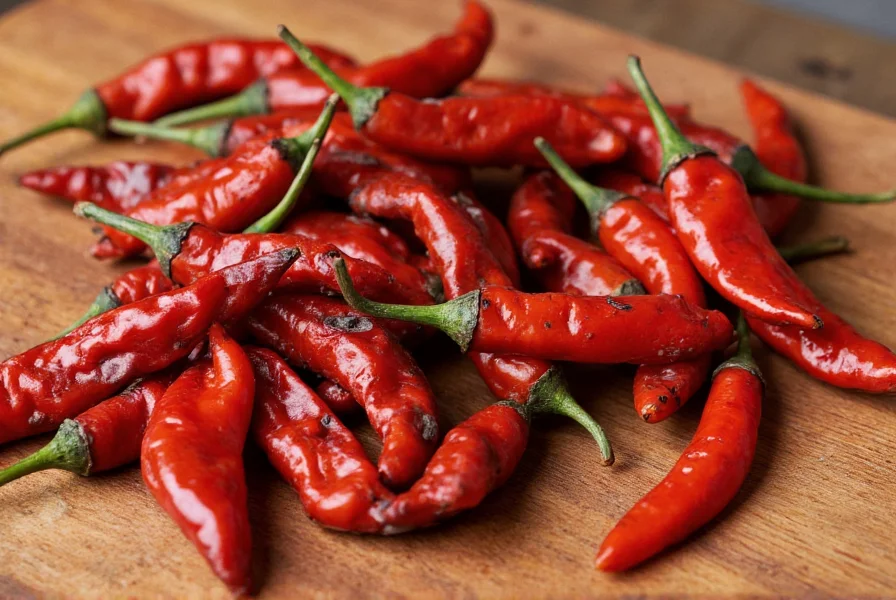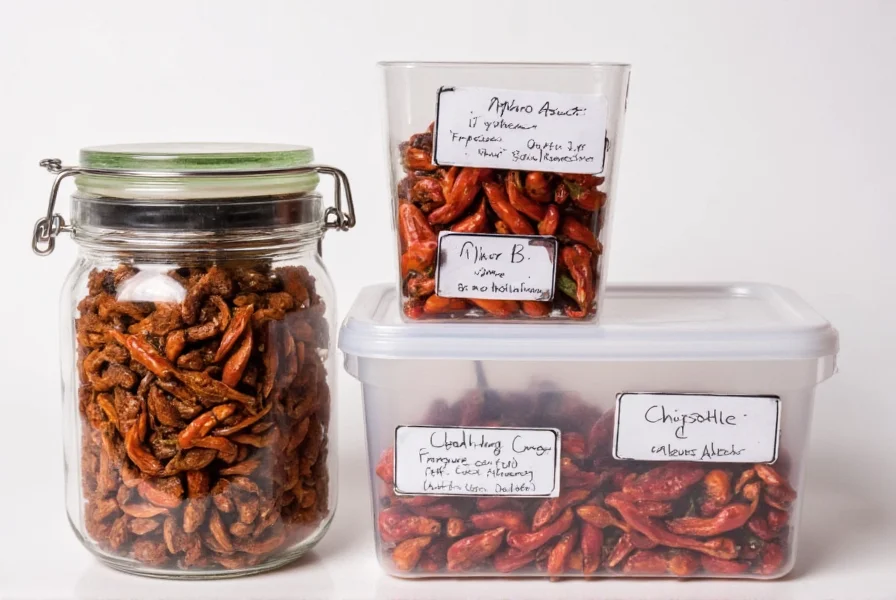Understanding smoked chili begins with appreciating the traditional smoking process that defines its character. Unlike standard dried chilies that lose moisture through sun-drying or mechanical dehydration, smoked chilies spend hours above smoldering wood fires. This dual preservation method—drying plus smoking—creates a distinctive flavor dimension that ordinary dried peppers cannot replicate. The wood selection significantly influences the final product; mesquite imparts bold, robust notes while oak provides a more subtle smoke, and fruitwoods like apple or cherry add delicate sweetness to the complex flavor profile of smoked chili.
The Traditional Smoking Process Explained
Authentic smoked chili production follows time-honored techniques that balance moisture removal with smoke absorption. Fresh ripe peppers are carefully arranged on raised racks above a low, consistent fire that generates ample smoke but minimal direct heat. The smoking duration varies by pepper type and desired intensity—typically ranging from 12 to 72 hours. During this period, the peppers gradually lose moisture while absorbing phenolic compounds from the smoke that create the characteristic smoky flavor of smoked chili.
Temperature control proves critical in developing quality smoked chili. Temperatures must remain below 160°F (71°C) to prevent cooking the peppers rather than drying them. Higher temperatures would destroy capsaicinoids and volatile flavor compounds, resulting in bitter, one-dimensional smoked chili products. The slow, cool smoking process preserves the pepper's essential oils while allowing smoke compounds to penetrate deeply into the flesh.
Popular Smoked Chili Varieties and Their Characteristics
While chipotle peppers dominate commercial smoked chili offerings, numerous varieties exist, each contributing distinctive qualities to culinary applications. Understanding these differences helps home cooks select the best smoked chili for specific recipes and flavor profiles.
| Smoked Chili Variety | Heat Level (Scoville) | Flavor Profile | Best Culinary Uses |
|---|---|---|---|
| Chipotle (smoked jalapeño) | 2,500-8,000 | Smoky, earthy, slightly sweet | Moles, adobos, barbecue sauces, stews |
| Smoked guajillo | 2,500-5,000 | Tangy, berry-like, moderate smoke | Salsas, marinades, soups |
| Smoked arbol | 15,000-30,000 | Sharp heat, nutty, intense smoke | Hot sauces, finishing oils, spice blends |
| Smoked ancho ( poblano) | 1,000-2,000 | Fruity, raisin-like, mild smoke | Moles, chocolate dishes, braises |
Chipotle peppers remain the most accessible smoked chili variety in Western markets, typically sold canned in adobo sauce or dried whole. Their moderate heat level and pronounced smokiness make them versatile for numerous applications. Smoked guajillo offers a fruitier alternative with less intense heat, while smoked arbol provides serious heat seekers with a deeply smoky yet fiery option. Smoked ancho peppers deliver the mildest heat with complex fruit notes that complement chocolate and fruit-based dishes.

Maximizing Smoked Chili Flavor in Your Cooking
Successfully incorporating smoked chili into recipes requires understanding how to unlock and balance its distinctive flavor profile. The rehydration process significantly impacts the final dish—soaking dried smoked chilies in hot liquid (not boiling) for 15-20 minutes preserves volatile flavor compounds that higher temperatures would destroy. For optimal flavor extraction, add a small piece of onion or garlic to the soaking liquid, which helps draw out the complex compounds in smoked chili without making the flavor harsh.
When working with smoked chili in powder form, blooming the spice in oil before adding other ingredients dramatically enhances flavor development. Heat 1-2 tablespoons of neutral oil until shimmering, then add 1-2 teaspoons of smoked chili powder and cook for 30-60 seconds until fragrant. This technique, essential for creating authentic Mexican moles and adobos, transforms the powder's flavor from one-dimensional to complex and integrated. For recipes using canned chipotles in adobo, remember that the adobo sauce itself contains significant flavor—taste before adding additional seasonings to avoid overpowering your dish with the distinctive smoked chili essence.
Storage Techniques for Preserving Smoked Chili Quality
Proper storage proves essential for maintaining the distinctive flavor profile of smoked chili over time. Dried smoked chilies retain optimal quality for 6-12 months when stored in airtight containers away from light and heat. Vacuum sealing extends this period to 18-24 months while preserving the nuanced smoky characteristics. For longer storage, freeze dried smoked chilies in heavy-duty freezer bags with as much air removed as possible—properly frozen, they maintain quality for 3-4 years.
Canned chipotles in adobo require different handling. Once opened, transfer unused portions to a clean glass container, cover with the adobo sauce, and refrigerate for up to three weeks. For extended storage, freeze individual portions in ice cube trays before transferring to freezer bags—this method preserves the distinctive smoked chili flavor while allowing precise portion control for future recipes. Never store opened canned smoked chili in the original metal can, as prolonged contact causes metallic flavors to develop.

Creating Authentic Smoked Chili at Home
While commercial smoked chili products offer convenience, producing your own smoked chili at home yields superior flavor complexity and customization. The process requires minimal equipment but demands patience and attention to detail. Select ripe, blemish-free peppers of your chosen variety—red jalapeños for chipotles, ripe poblanos for anchos—and wash them thoroughly without puncturing the skins.
Prepare your smoker for indirect heat at 120-150°F (49-66°C), using wood chunks rather than chips for longer, more consistent smoke production. Arrange peppers in a single layer on smoker racks, leaving space between them for air circulation. Smoke for 8-12 hours for thinner-walled peppers like serranos, or 24-48 hours for thicker varieties like poblanos. The peppers are done when they snap cleanly rather than bend. After smoking, condition the peppers by storing them in paper bags for 3-5 days to equalize moisture content before transferring to long-term storage containers.
Common Mistakes to Avoid with Smoked Chili
Even experienced cooks sometimes mishandle smoked chili, diminishing its distinctive flavor profile. The most frequent error involves using too much—smoked chili's intensity means a little goes a long way. Start with half the amount you'd use of regular chili powder, then adjust to taste. Another common mistake involves adding smoked chili too late in the cooking process; its complex flavor compounds need time to integrate with other ingredients, so add dried or powdered forms early in the cooking timeline.
Many cooks also overlook the importance of balancing smoked chili's intensity with complementary flavors. The distinctive smokiness pairs exceptionally well with sweet elements (like roasted sweet potatoes or a touch of honey), acidic components (such as lime juice or vinegar), and cooling agents (like yogurt or avocado). When a dish featuring smoked chili tastes one-dimensional, adding one of these balancing elements often restores harmony to the complex flavor profile of smoked chili.
Frequently Asked Questions
What's the difference between smoked chili and regular dried chili?
Smoked chili undergoes a dual preservation process—drying plus exposure to wood smoke—which creates distinctive flavor compounds not found in standard dried chilies. Regular dried chilies lose moisture through sun-drying or mechanical dehydration without smoke exposure, resulting in simpler flavor profiles that lack the complex smoky, earthy notes characteristic of authentic smoked chili.
Can I substitute smoked paprika for smoked chili in recipes?
Smoked paprika makes an acceptable substitute for smoked chili powder in many applications, but with important distinctions. Traditional smoked paprika (particularly Spanish Pimentón de la Vera) offers a milder, sweeter smoke profile compared to most smoked chili powders. When substituting, use 1:1 by volume but expect less heat and a different flavor nuance. For recipes specifically calling for chipotle powder, consider adding a pinch of cayenne to approximate the heat level of authentic smoked chili.
How can I reduce the heat of smoked chili without losing flavor?
To moderate the heat of smoked chili while preserving its distinctive flavor profile, remove seeds and inner membranes before using dried peppers—these contain most capsaicin. When using smoked chili powder, blend it with equal parts sweet paprika. For canned chipotles, rinse them briefly under cold water before chopping. Adding dairy (like yogurt or cream) or acidic elements (such as lime juice) to finished dishes also counterbalances heat without diminishing the complex smoky characteristics of quality smoked chili.
Why does my smoked chili taste bitter?
Bitterness in smoked chili typically results from excessive heat during preparation or storage. Cooking smoked chili powder above 300°F (149°C) burns the delicate compounds, creating bitterness. Similarly, improper smoking techniques using green wood or excessive heat during production can impart bitter notes. To rescue bitter dishes, add small amounts of sweetness (honey, sugar) or acid (vinegar, citrus) to balance the flavor. For future reference, always bloom smoked chili powders in oil below smoking point and avoid prolonged high-heat cooking with smoked chili ingredients.
What wood types work best for smoking chilies at home?
Fruitwoods like apple, cherry, and pecan produce the most balanced smoked chili with subtle sweetness that complements rather than overwhelms the pepper's natural flavor. Mesquite creates a stronger, more assertive smoked chili profile suitable for robust dishes but can dominate delicate recipes. Avoid softwoods like pine or cedar, which contain resins that create unpleasant flavors in smoked chili. For traditional chipotle-style smoked chili, oak provides the authentic medium-intensity smoke profile associated with commercial products.











 浙公网安备
33010002000092号
浙公网安备
33010002000092号 浙B2-20120091-4
浙B2-20120091-4